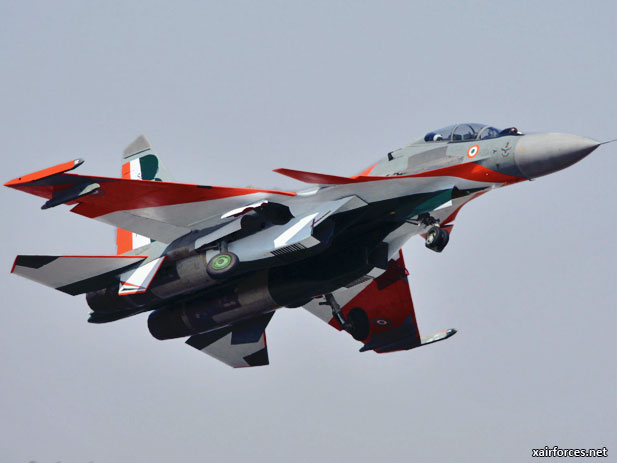
SIPRI Report Shows India is World’s Largest Recipient of Arms

The volume of worldwide arms transfers in 2007–2011 was 24 per cent higher than in 2002–2006 and the five largest arms importers in 2007–2011 were all Asian states, according to new data on international arms transfers published today by Stockholm International Peace Research Institute (SIPRI).
Asia and Oceania accounted for 44 per cent of global arms imports, followed by Europe (19 per cent), the Middle East (17 per cent), the Americas (11 per cent) and Africa (9 per cent).
India was the world’s largest recipient of arms, accounting for 10 per cent of global arms imports. The four next largest recipients of arms in 2007–2011 were South Korea (6 per cent of arms transfers), Pakistan (5 per cent), China (5 per cent) and Singapore (4 per cent).
‘Major Asian importing states are seeking to develop their own arms industries and decrease their reliance on external sources of supply,’ said Pieter Wezeman, senior researcher with the SIPRI Arms Transfers Programme. ‘A large share of arms deliveries is due to licensed production.’
CHINA SHIFTS FROM IMPORTS TO EXPORTS
China, which was the largest recipient of arms exports in 2002–2006, fell to fourth place in 2007–11. The decline in the volume of Chinese imports coincides with the improvements in China’s arms industry and rising arms exports.
Between 2002–2006 and 2007–11, the volume of Chinese arms exports increased by 95 per cent. China now ranks as the sixth largest supplier of arms in the world, narrowly trailing the United Kingdom.
‘While the volume of China’s arms exports is increasing, this is largely a result of Pakistan importing more arms from China’, said Paul Holtom, director of the SIPRI Arms Transfers Programme. ‘China has not yet achieved a major breakthrough in any other significant market.’
ARAB SPRING HAS LIMITED IMPACT ON ARMS TRANSFERS
Major suppliers continued to deliver weapons to countries affected by the events of the Arab Spring. Despite a review in 2011 of its arms transfer policies towards the region, the USA remains a major supplier to both Tunisia and Egypt. In 2011, the USA delivered 45 M-1A1 tanks to Egypt and agreed to deliver 125 more.
Russia supplied 78 per cent of Syria’s imports in 2007–11. During 2011 Russia continued deliveries of Buk-M2E SAM systems and Bastion-P coastal defence missile systems to Syria, as well as securing an order for 36 Yak-130 trainer / combat aircraft. These deliveries contributed to a 580 per cent increase in the volume of Syrian arms imports between 2002–2006 and 2007–11.
‘The transfer of arms to states affected by the Arab Spring has provoked public and parliamentary debate in a number of supplier states. However, the impact of these debates on states' arms export policies has, up to now, been limited,’ states Mark Bromley, senior researcher with the SIPRI Arms Transfers Programme.
OTHER NOTABLE DEVELOPMENTS
• In 2011 Saudi Arabia placed an order with the USA for 154 F-15SA combat aircraft, which was not only the most significant order placed by any state in 2011 but also the largest arms deal for at least 2 decades.
• Greece’s arms imports decreased by 18 per cent between 2002–2006 and 2007–11. In 2007–11 it was the 10th largest arms importer, down from being the 4th largest in 2002–2006. Greece placed no new order for major conventional weapons in 2011.
• Venezuela’s arms imports increased by 555 per cent between 2002–2006 and 2007–11 and it rose from being the 46th largest importer to the 15th largest.
• The volume of deliveries of major conventional weapons to states in North Africa increased by 273 per cent between 2002–2006 and 2007–11. Morocco’s imports of major weapons increased by 443 per cent between 2002–2006 and 2007–11.
The comprehensive annual update of the SIPRI Arms Transfers Database is accessible from today at www.sipri.org.
The SIPRI Arms Transfers Database contains information on all international transfers of major conventional weapons (including sales, gifts and production licences) to states, international organizations and armed non-state groups from 1950 to the most recent full calendar year. Since the volume of deliveries of arms can ?uctuate signi?cantly from one year to the next, SIPRI presents data for ?ve-year periods to give a more stable measure of trends in international transfers of major conventional weapons.
This is the second of a series of three major data sets pre-launches, before SIPRI's Yearbook is published in June 2012. On 17 April its world military expenditure data (comprehensive information on global, regional and national trends in military spending). Finally, in June, SIPRI will launch its 2012 Yearbook (cutting-edge information and analysis on the state of the world's nuclear forces, the international peacekeeping agenda and steps to control WMD).
Source: Stockholm | Stockholm International Peace Research Institute (SIPRI) - March 19, 2012
Photo: Indian Air Force Sukhoi Su-30 Flanker-C ((Photo by IAF)
(20.03.2012)
|